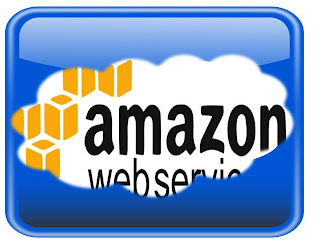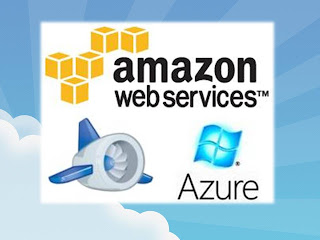1. Cloud computing is becoming mainstream
Get ready for the new buzzwords. As cloud computing is becoming mainstream, it is no longer viewed as a game changer; it is a requirement and a “normal” way to launch applications and services.
2. Many businesses will follow the federal agencies’ “cloud first” policy
US Government instructs Federal agencies to adopt “cloud-first” policy whenever possible – considering the best cloud solutions to cut the Gov’t IT budget; it is a success. So, expect businesses to adopt the same “cloud-first” policy when considering new system purchases.
3. Businesses urge to see the cloud ROI
Related to no. 1 above, as the cloud is considered as “normal” IT system, it will be placed under a (very bright) spotlight; businesses will demand business values out of the cloud (typically measured by ROI figures.)
4. Private clouds will grow faster than public clouds
As Virtualization increases across the business world, many companies with significant existing IT infrastructures or sensitive data assets will see private cloud model as the most effective and efficient way to go cloud.
5. Private clouds will make IT roles more important in business
Adopting new technology, such as private clouds will require IT execs and managers to guide the companies into the cloud. That being said, IT people’s cloud-related skills will be crucial.
6. IT departments will become both friend and foe of public cloud providers
Many companies will use both outside and internal IT services. IT departments will act as facilitators in adopting public clouds, as well as competitors to the public cloud providers in providing better value for the companies.
7. Lines between service providers and customers will be blurry
As more companies adopt private clouds, soon they will no longer be customers only, but also building and offering their own cloud services – just like what we see in today’s app store model.
8. Public clouds will be more secure than on-premise IT systems
Despite in-house data is considered to be more secure than those located in public clouds, it’s not likely to be the case now. The argument: The public cloud provider’s IT team is well-trained and well-certified to keep their own systems secure.
9. Accelerated economic growth as more businesses will be established in the cloud
The cloud is affordable, yet so powerful. Why invest a lot for your own system when you can have everything in the cloud? Now new businesses can quickly launch new apps and services from cloud platforms – affordably – without the time constraints and financial burdens. Want to start an e-commerce business? Just plug into the cloud; want to start any brick-and-mortar business, just plug your business back-end into the cloud.
10. Cloud will change how we outsource
The cloud allows businesses to outsource as needed, easily. Micro-outsourcing will be booming. That being said, the cloud lowers the barrier of entry for outsourcing service providers – thus increasing competition that will result in lowered prices. The outsourcing market will be a dynamic and lucrative market.
Get ready for the new buzzwords. As cloud computing is becoming mainstream, it is no longer viewed as a game changer; it is a requirement and a “normal” way to launch applications and services.
2. Many businesses will follow the federal agencies’ “cloud first” policy
US Government instructs Federal agencies to adopt “cloud-first” policy whenever possible – considering the best cloud solutions to cut the Gov’t IT budget; it is a success. So, expect businesses to adopt the same “cloud-first” policy when considering new system purchases.
3. Businesses urge to see the cloud ROI
Related to no. 1 above, as the cloud is considered as “normal” IT system, it will be placed under a (very bright) spotlight; businesses will demand business values out of the cloud (typically measured by ROI figures.)
4. Private clouds will grow faster than public clouds
As Virtualization increases across the business world, many companies with significant existing IT infrastructures or sensitive data assets will see private cloud model as the most effective and efficient way to go cloud.
5. Private clouds will make IT roles more important in business
Adopting new technology, such as private clouds will require IT execs and managers to guide the companies into the cloud. That being said, IT people’s cloud-related skills will be crucial.
6. IT departments will become both friend and foe of public cloud providers
Many companies will use both outside and internal IT services. IT departments will act as facilitators in adopting public clouds, as well as competitors to the public cloud providers in providing better value for the companies.
7. Lines between service providers and customers will be blurry
As more companies adopt private clouds, soon they will no longer be customers only, but also building and offering their own cloud services – just like what we see in today’s app store model.
8. Public clouds will be more secure than on-premise IT systems
Despite in-house data is considered to be more secure than those located in public clouds, it’s not likely to be the case now. The argument: The public cloud provider’s IT team is well-trained and well-certified to keep their own systems secure.
9. Accelerated economic growth as more businesses will be established in the cloud
The cloud is affordable, yet so powerful. Why invest a lot for your own system when you can have everything in the cloud? Now new businesses can quickly launch new apps and services from cloud platforms – affordably – without the time constraints and financial burdens. Want to start an e-commerce business? Just plug into the cloud; want to start any brick-and-mortar business, just plug your business back-end into the cloud.
10. Cloud will change how we outsource
The cloud allows businesses to outsource as needed, easily. Micro-outsourcing will be booming. That being said, the cloud lowers the barrier of entry for outsourcing service providers – thus increasing competition that will result in lowered prices. The outsourcing market will be a dynamic and lucrative market.


















